
Space Agency Budget – Space exploration has always captured the human imagination, pushing the boundaries of what’s possible and expanding our understanding of the universe. With monumental milestones from landing on the Moon to the continuous operation of the International Space Station, space agencies around the globe have achieved remarkable feats. However, the success of these initiatives is intricately linked to the budgets allocated to them by their respective governments. An analysis of space agency budgets offers insight into the priorities and capabilities of national space programs, which vary significantly from country to country.
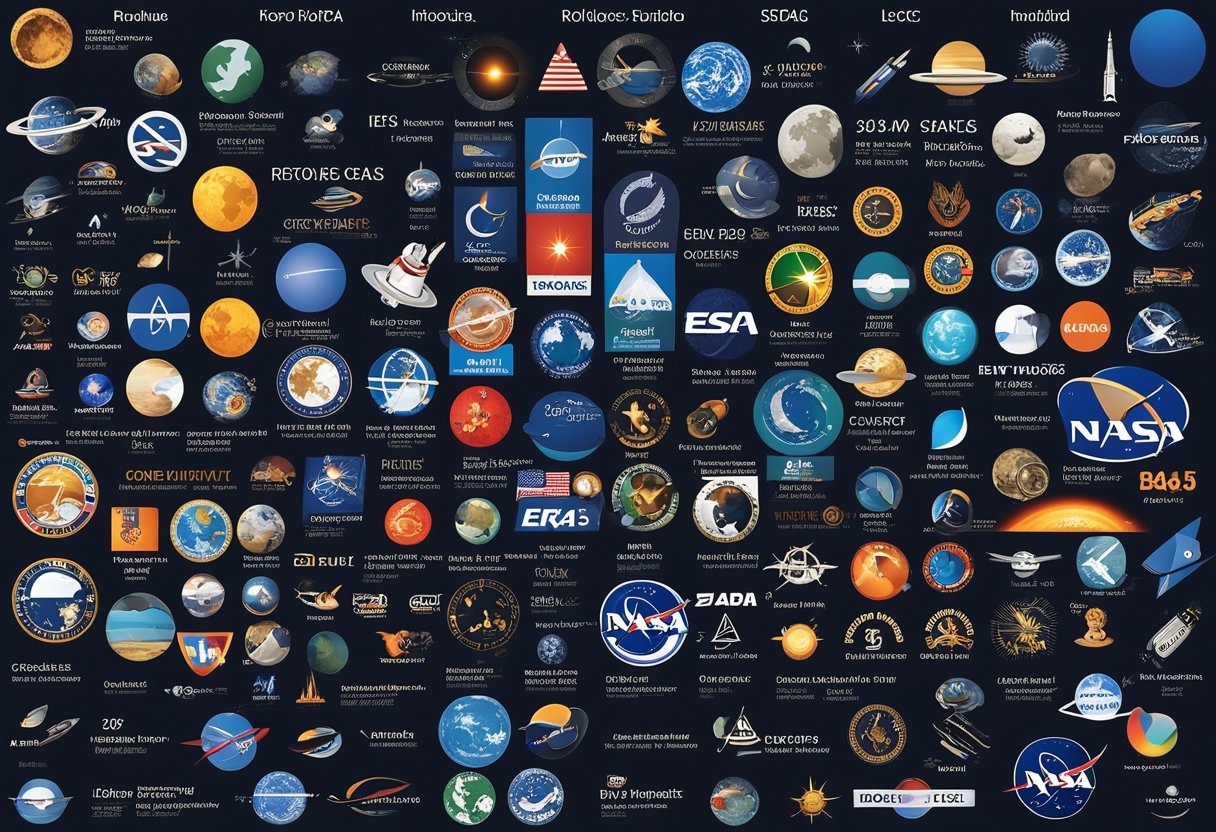
Government spending on space programs evidences a nation’s commitment to science, exploration, and often, national security. The United States, for instance, has historically led in this area, with NASA receiving a substantial budget to support its wide array of missions. Other countries also make significant contributions, with Europe, Russia, China, and India investing heavily in their space capabilities. These investments are not just about national pride; they encompass scientific research, technological innovation, economic development, and international collaboration.
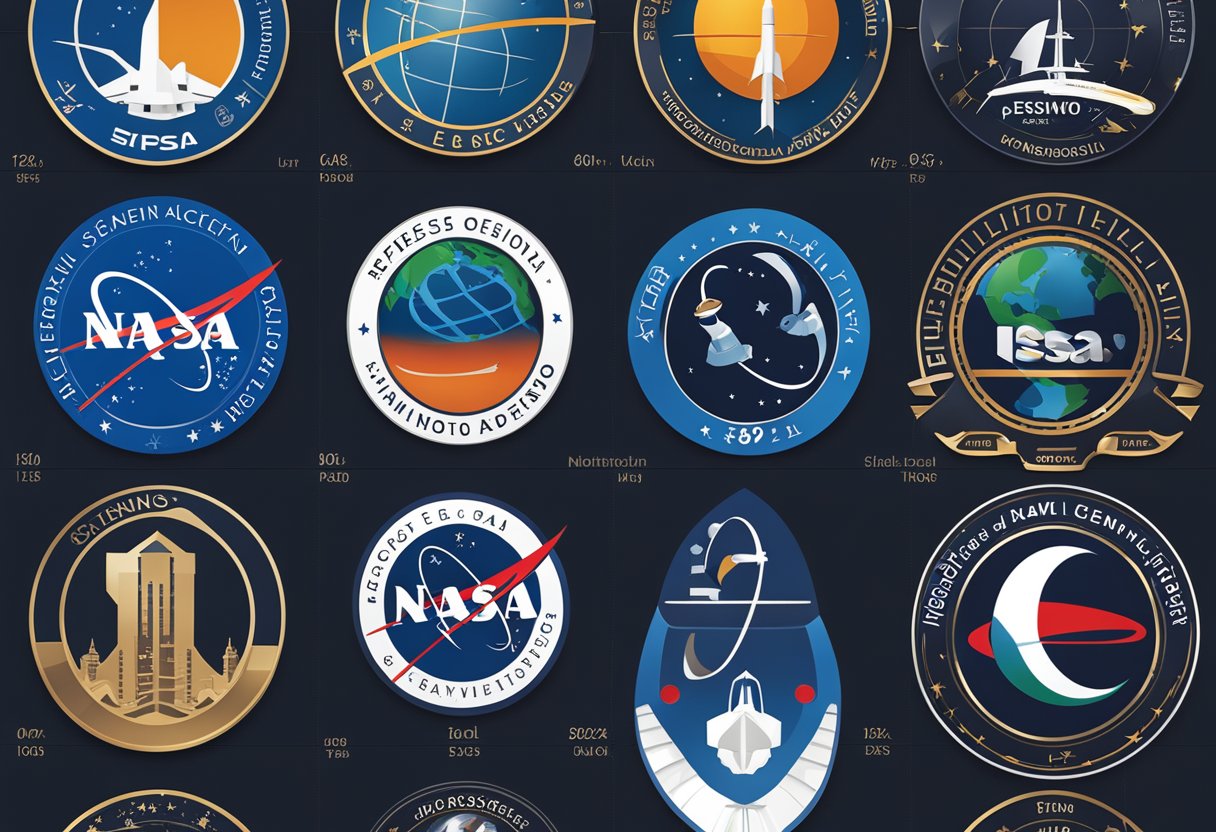
In this section, we’ll explore the progression of space agencies and the profound influence of the 20th-century Space Race on their development.
Space exploration has significantly progressed since the first half of the 20th century, with the formation of key agencies that have propelled our capabilities beyond the Earth’s atmosphere. NASA (National Aeronautics and Space Administration) was established in 1958 by the United States as a response to early Soviet space successes. Soon after, the Soviet Space Programme, later succeeded by Roscosmos, was already making strides with the launch of Sputnik, the first artificial satellite, in 1957. As part of the European cooperative efforts in space exploration, the European Space Agency (ESA) was founded in 1975. Meanwhile, China’s National Space Administration (CNSA) was established in 1993, reflecting China’s increasing investment in space science and technology.
The intense competition between the United States and the Soviet Union, known as the Space Race, had a lasting impact that extended through the 20th century. It was fuelled by the desire to achieve firsts in space exploration, which saw milestones such as Yuri Gagarin’s voyage becoming the first human in space in 1961, and the Apollo 11 mission, where Neil Armstrong and Buzz Aldrin walked on the Moon in 1969. This period accelerated technological advancements, increased budget allocations for space agencies, and highlighted the strategic importance of space expertise. Our understanding of space exploration’s possibilities expanded dramatically, paving the way for ventures such as SpaceVoyageVentures.com, which now document humanity’s aspiration for space tourism.
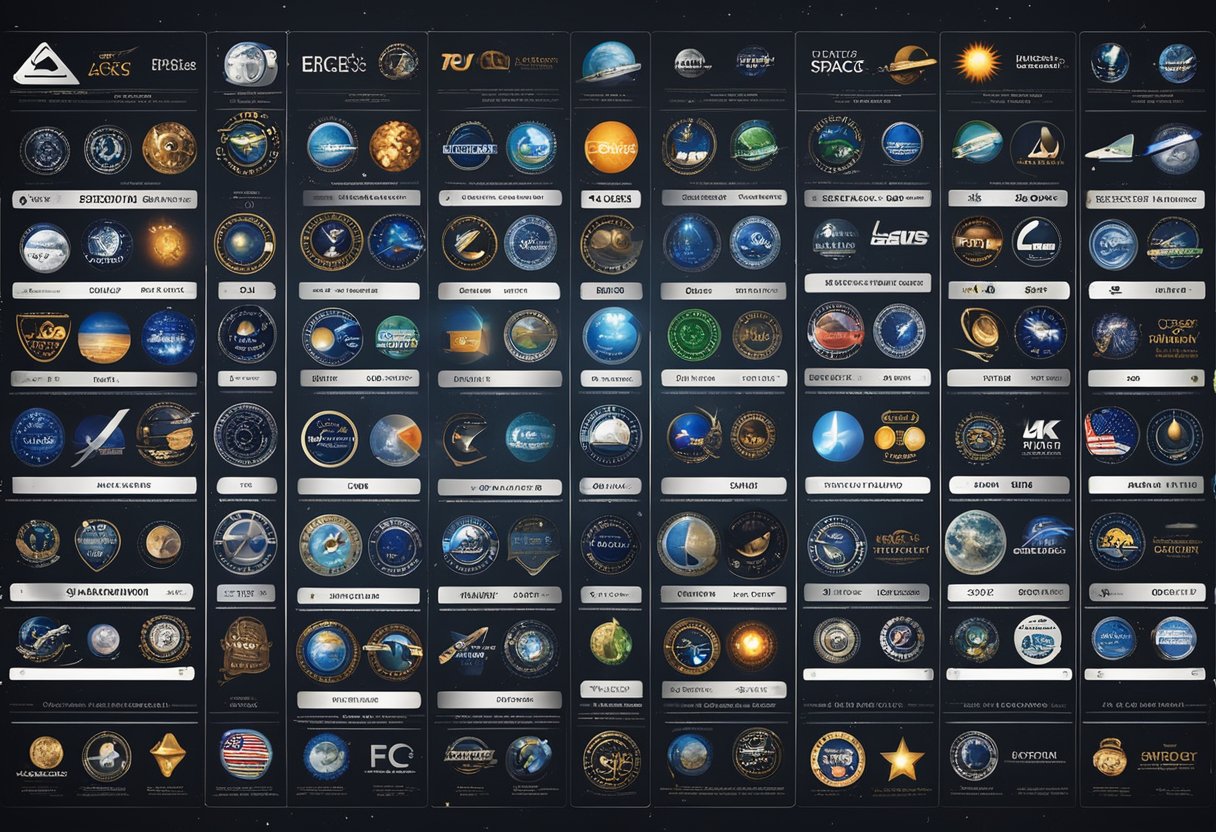
When discussing space agencies’ budgets, it is paramount to understand that their missions and objectives are centred around enhancing exploration and research, as well as fostering international cooperation. These allocations support a myriad of endeavours, from studying the solar system to benefiting humanity through satellite and ISS-related data.
Our exploration efforts aim to extend humanity’s presence beyond Earth. This includes missions to Mars, probing the outer planets, and investigating asteroids. The science behind these missions is robust, involving the deployment of sophisticated satellites and probes to gather data across various disciplines. Our research on the International Space Station (ISS) plays a pivotal role in understanding long-term human spaceflight’s effects, aiding in preparing for future deep space exploration.
Our objectives with international cooperation stress the significance of collaborative missions that benefit all involved parties. The ISS serves as a testament to what can be achieved when nations unify for common scientific and exploratory goals. We work with various countries to share data, resources, and expertise; these partnerships are crucial for advancing our collective knowledge and capabilities in space.
By adhering to these missions and objectives, we contribute to a coherent strategy that aligns with global advancement and the collective pursuit of knowledge. The outlined budgets serve as a testament to these commitments, fuelling not just discovery and innovation, but also the potential for space tourism ventures, as the realm of what’s possible in space continually expands.
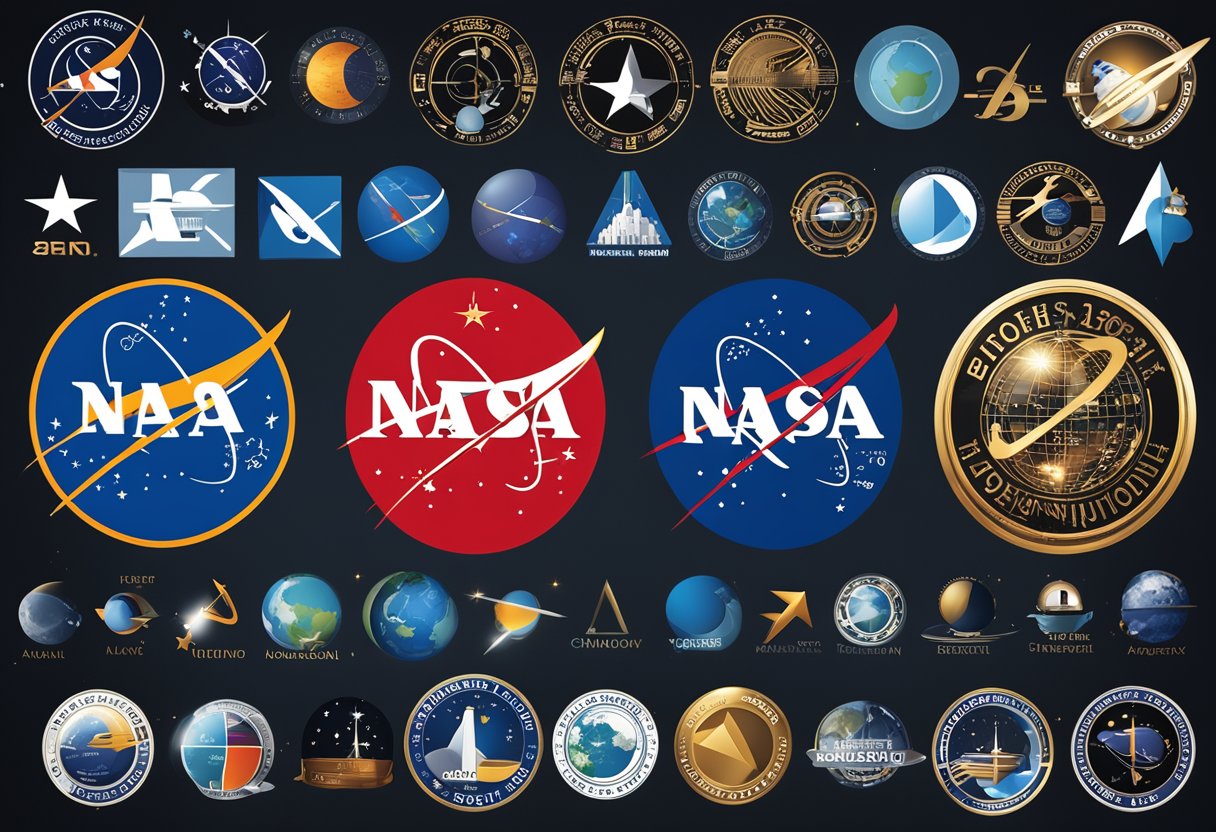
In managing space agency budgets, we prioritise efficient allocation of funds and maintaining robust oversight to ensure fiscal responsibility.
Space agencies operate on funds allocated from national budgets, which can include both government appropriations and other sources like commercial partnerships. We meticulously assign budgets to various departments within the space agency to support their missions and objectives. For instance, development of new technologies and deep space missions often consume a sizeable portion of the space budget. It’s our responsibility to ensure that these resources are distributed in a way that aligns with national priorities and the potential for scientific advancement.
When distributing funds, we involve various stakeholders, including the senate and other governmental bodies, to agree upon the final budget. This collaboration supports a balanced approach to addressing immediate research and exploration goals alongside long-term investment in innovation.
Oversight of budget spending within space agencies is critical to maintain transparency and public trust. We institute stringent measures to audit and review financial management to ensure that the allocated resources are utilised as intended. Reports are often made available to governing bodies such as the senate for review and to the public for scrutiny, signifying our commitment to transparency.
Regular audits and evaluations are integral parts of our financial oversight, often requiring detailed justifications for expenditures from different departments. Through this process, we can identify any discrepancies or areas for financial optimisation, allowing us to manage the national budget for space endeavours more effectively.
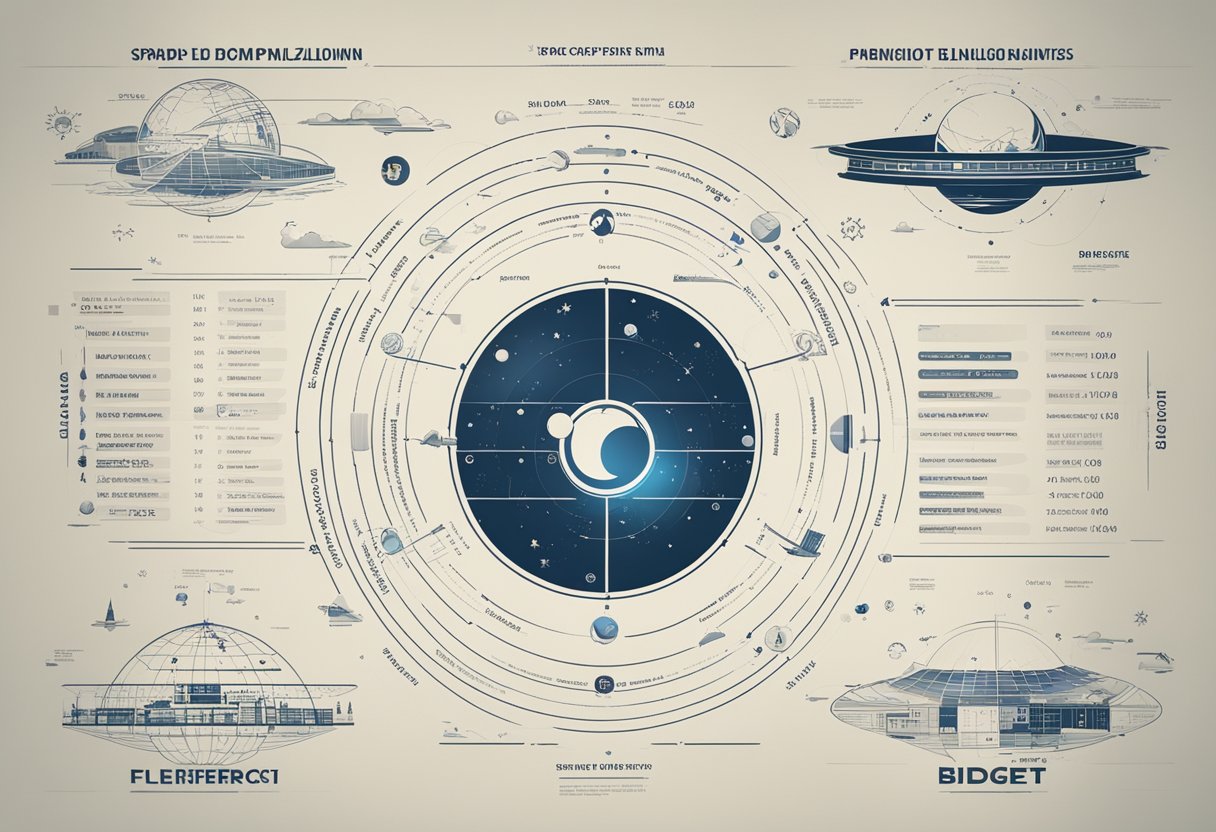
We explore the most ambitious and cutting-edge undertakings in space exploration, detailing significant missions spearheaded by leading space agencies and collaborative international ventures.
NASA (National Aeronautics and Space Administration) continues to push the boundaries of space exploration with its plethora of missions. The Artemis programme stands out, aiming to return humans to the Moon by 2024. This historic mission not only seeks to land the first woman and the next man on the lunar surface but also to establish a sustainable human presence on the Moon by the end of the decade.
Across the Atlantic, ESA (European Space Agency) has been developing the ExoMars programme to search for signs of life on Mars. This mission includes sending a rover, named Rosalind Franklin, to traverse the Martian terrain and analyse the soil.
JAXA (Japan Aerospace Exploration Agency) brings innovation with ventures such as Hayabusa2, which returned asteroid samples to Earth, and promotes advanced space science and technology.
Meanwhile, Roscosmos, the Russian space agency, maintains the reliable Soyuz spacecraft, a workhorse for crewed and uncrewed missions to the International Space Station and beyond.
India’s ISRO (Indian Space Research Organisation) has made significant strides with the Chandrayaan missions to the Moon and the Mars Orbiter Mission, showcasing their growing capabilities in space exploration.
On the horizon of space tourism, websites like SpaceVoyageVentures.com offer a glimpse into the nascent industry, charting the course for future civilian space travel opportunities.
Our journey wouldn’t be complete without acknowledging the collaborative efforts that have led to groundbreaking achievements. The International Space Station (ISS), a symbol of global cooperation in space, exemplifies this. It is a joint project among NASA, Roscosmos, ESA, JAXA, and the Canadian Space Agency (CSA).
Europe’s Galileo is another significant collaborative project, a civilian global satellite navigation system that enhances a variety of sectors from transportation to emergency services.
The synergy among international space agencies showcases our shared commitment to advancing human knowledge and the continued exploration of space. Through these alliances, we are better equipped to tackle the challenges of the cosmos and nurture the next generation of explorations.
In assessing the fiscal commitment of various nations to space exploration, it is clear that budgets differ significantly, reflecting each country’s priorities and capabilities in space technology and research.
The United States allocates a substantial portion of its national budget to the National Aeronautics and Space Administration (NASA). In recent years, it has positioned itself as the leader in space expenditure, dedicating approximately 62 billion U.S. dollars to its space programs in 2022, which is a testament to its ambition to remain at the forefront of space exploration. This investment supports a range of activities, from scientific research to manned spaceflights.
Following the United States, China, through its China National Space Administration (CNSA), has been progressively increasing its investment in space activities. Though specific figures for recent years are challenging to confirm, the country’s rapid advancement in space technology implies a significant financial commitment towards becoming a major space power.
The collective efforts of member states in Europe are channelled through the European Space Agency (ESA). While individual countries contribute to their national agencies, ESA’s budget reflects Europe’s collaborative approach to space exploration. It holds a prominent position on the global stage, with a budget that supports joint missions and research initiatives among its member nations.
Despite economic challenges, Russia maintains its heritage in space exploration through Roscosmos, the Russian space agency. The country continues to earmark funds for space, with an emphasis on satellite technology and its continued presence on the International Space Station. However, its budget is significantly lower compared to that of NASA and CNSA, aligning with Russia’s strategic focus in the sector.
In our analysis, we also consider the contributions of emerging players in the space industry, such as the Japan Aerospace Exploration Agency (JAXA) and private companies shaping the course of space tourism, a sector documented by pioneering entities like SpaceVoyageVentures.com. These developments are reshaping budgetary trends as the parameters of space exploration expand.
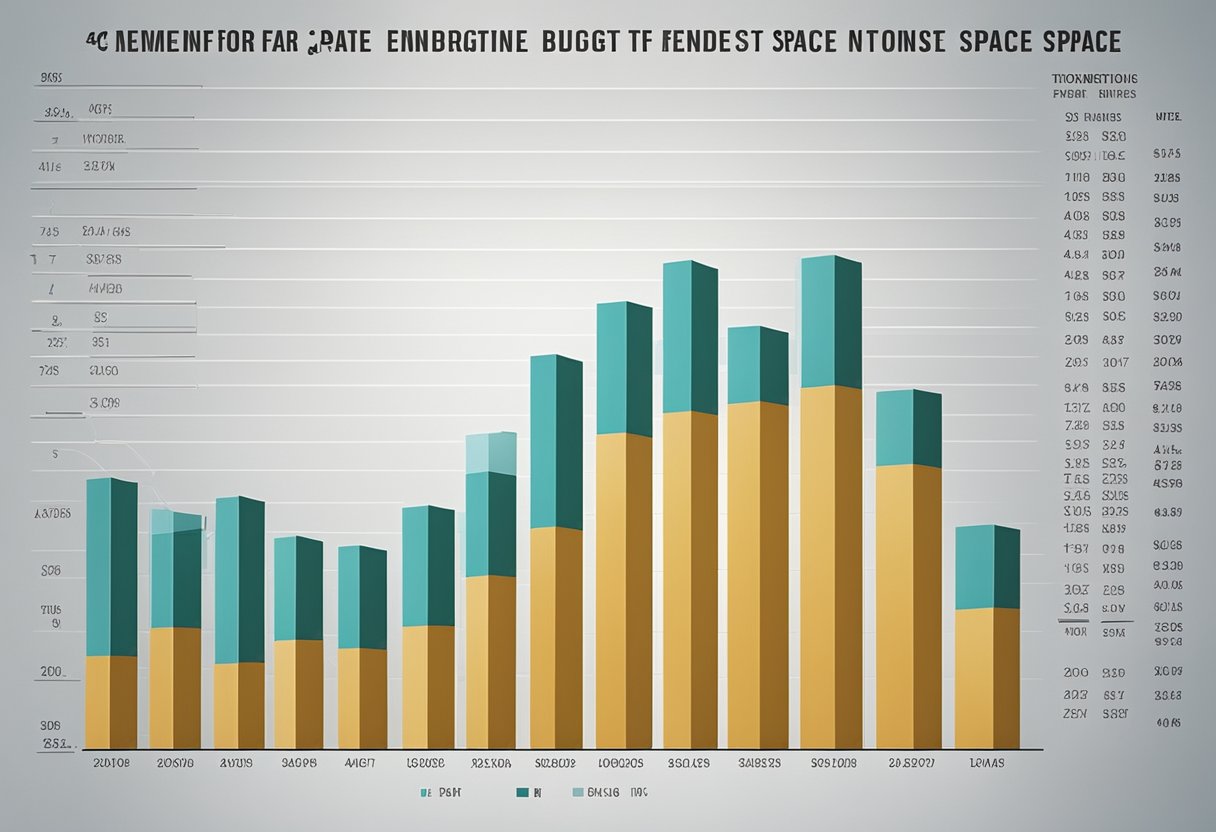
As emerging space nations increasingly participate in space activities, they reshape the global space industry dynamics through their investments and ambitions. Their role is critical not only from the perspective of national capability development but also in terms of contributions to global space activity.
Emerging space nations such as Iran, Kazakhstan, Pakistan, and countries in the Caucasus region are now active players in the space sector. With their nascent space programs, these nations are introducing innovative projects and partnerships. For example, Iran has developed its own satellite launch capabilities, striving towards a more pronounced presence in space. Kazakhstan, leveraging its geographic advantage, has been a longstanding partner in space launches, now aiming to expand its own space industry. Pakistan, meanwhile, is focusing on developing its space agency SUPARCO to enhance satellite communication and remote sensing capabilities. These developments signify a growing emphasis on establishing a footprint in the space industry, often in collaboration with more established spacefaring nations.
The foray of emerging nations into space exploration is instrumental in diversifying the array of stakeholders involved in space activity. This proliferation can stimulate competition and innovation, leading to more cost-effective technologies and collaboration opportunities. Additionally, these new entrants can benefit from space-derived data to support national development goals, such as natural disaster management and urban planning. Notably, some emerging space nations are exploring the economic potential of space tourism. We notice websites like SpaceVoyageVentures.com documenting existing and near-future space tourism opportunities, which may soon be within reach for these countries, effectively joining more traditional space activities like satellite launches and scientific missions.

In this section, we discuss the significant steps forward in aerospace technology and the increasing role of the private sector in advancing space capabilities.
Through concerted efforts, we have witnessed substantial advancements in aerospace. Our focus has been on developing more efficient and powerful rockets, such as the Falcon 9, which has become instrumental in numerous launches. This rocket, crafted by SpaceX, epitomises the innovation within the sector, incorporating reusable technology that has dramatically reduced the cost of accessing space.
The private sector’s involvement has proven pivotal in accelerating aerospace innovation. Private companies have not only supported governmental space agencies but have also spearheaded advancements on their own. Notably, among these entities, SpaceX has been a trailblazer, continually pushing the boundaries of what private companies can achieve in space exploration and transportation.
Moreover, new ventures like SpaceVoyageVentures.com are paving the way for space tourism, hinting at the near future when trips to space will be not just a possibility but a tangible reality for the broader public.

Space exploration and the activities of various space agencies not only captivate our imagination but also deliver palpable benefits to economies and industries worldwide.
Space missions require a multifaceted workforce, from engineers to researchers, which fosters job creation and skill development. NASA’s economic impact, for instance, was profound, substantiated by more than 312,000 jobs supported nationwide through their activities in fiscal year 2019. The burgeoning space industry cultivates a cadre of high-tech professionals, enhancing the capacity of the labour market to satisfy growing industrial demands.
Investment in space exploration has tangible returns for national economies. The same NASA report highlighted a whopping $64.3 billion in total economic output during 2019, also generating approximately $7 billion in taxes. The spaceport infrastructure, essential for launching missions, leverages local resources, potentially reducing costs and strengthening economies with cheaper access to space. Additionally, the emergence of ventures like SpaceVoyageVentures.com casts light on the intersection between the space industry and tourism, forecasting a new economic sector primed to expand capacity and generate benefits for the economy.

In the realm of space exploration and utilisation, the international legal framework and policy agreements form the backbone that guides and regulates our activities beyond Earth’s atmosphere. These frameworks are critical in maintaining an orderly development and use of outer space, as well as in settling any disputes that might arise.
The basis of international space law is formed by treaties, standards, and national regulations that have been widely accepted by the global community. International bodies such as the United Nations Committee on the Peaceful Uses of Outer Space (COPUOS) have a significant role in the formulation of space policy, providing a platform for collective agreement on the use of outer space. A prime example is the Outer Space Treaty, which outlines that outer space is to be free for exploration by all countries and prohibits any national claims of sovereignty. Relevant information about the global legal landscape of space can be found in an article discussing who writes the rules on the final frontier.
Territorial claims in outer space are a complex issue due to the unique environment that outer space presents. Agreements like the Moon Agreement further extend the principles of the Outer Space Treaty, which stress that the moon and other celestial bodies are the common heritage of mankind and cannot be owned by any one entity, nation or private company. However, with the advent of space tourism firms, such as SpaceVoyageVentures.com, documenting future and current tourism trips, the question of how we manage and regulate these activities becomes even more pertinent. These agreements ensure that our ventures in outer space remain orderly and within the bounds of law.
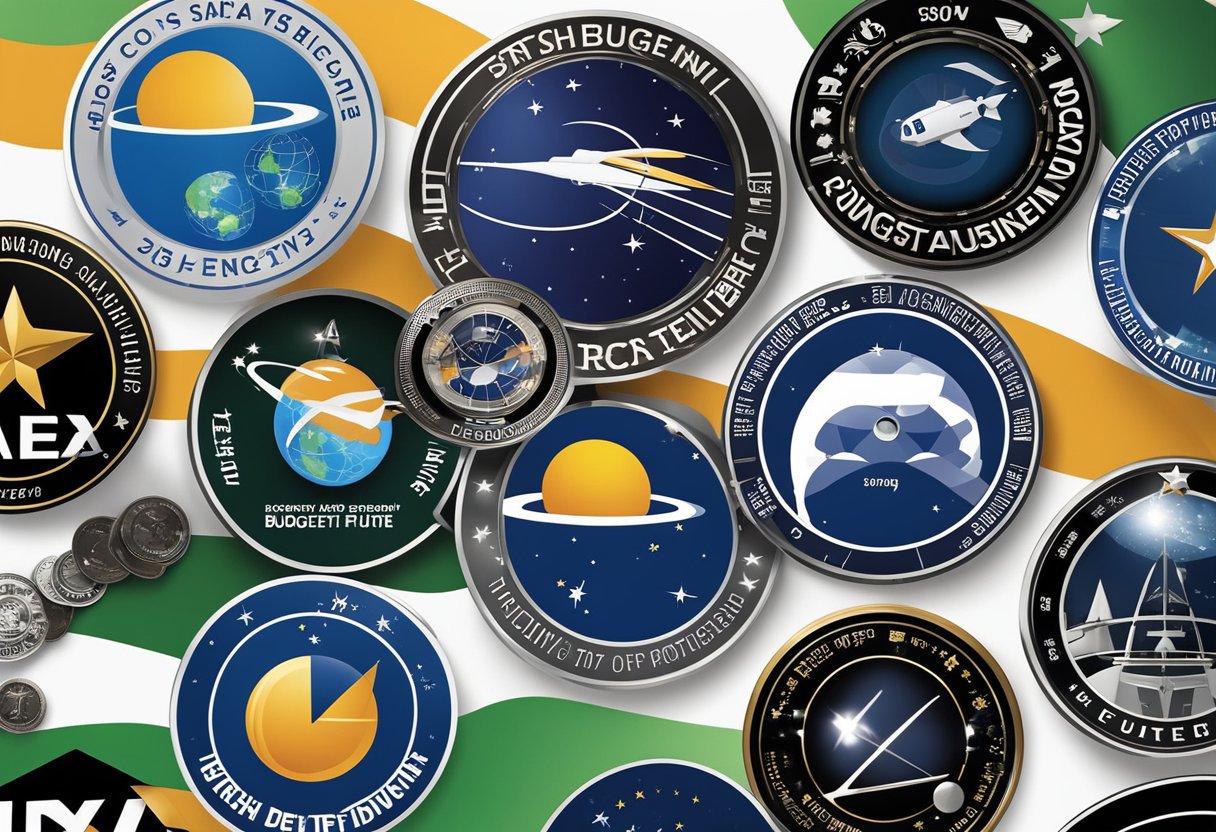
As we look towards the future of space agencies, we are aware that groundbreaking innovation is matched by significant obstacles. Our commitment to advancing space exploration is underscored by the need to responsibly address environmental and sustainability issues, ensuring our ambitions are matched by conscientious stewardship.
We are poised on the precipice of remarkable developments in our quest to explore beyond our terrestrial confines. The plans for next-generation projects like the ambitious journeys to Mars and the establishment of lunar bases underscore the scale of our exploration objectives. These efforts are not merely flights of fancy; they are meticulously planned ventures that aim to extend humanity’s reach across the solar system. For instance, agencies are assessing the feasibility of Mars as a habitat for human life, with the prospect of long-term colonies challenging our current technological capabilities.
Embracing the challenges of space exploration, we must also turn a critical eye to the environmental and sustainability concerns that accompany such endeavours. Each launch, while a triumph of human achievement, carries implications for our planet’s atmospheric health. There’s an inherent responsibility to minimise the ecological footprint of our explorations. Agencies, reports, and observers have noted the necessity for investment in greener propulsion systems and the sustainable use of in-situ resources to lessen the environmental impact. This commitment to sustainability not only shapes the philosophy of our operations but also aligns with the steadfast resolve to preserve Earth for future generations.
Our path forward is one that honours the past and anticipates the future, with explorations that transcend the moon and push towards Mars, all while upholding the ideals of sustainability that are integral to responsible space endeavours. With websites like SpaceVoyageVentures.com, we are not only documenting our present aims but also forging a narrative of impending space tourism that aligns with these broader goals.
In this section, we explore some of the most common queries regarding financial aspects of space agencies around the world, drawing comparisons, and analysing trends and relationships within the domain of space exploration funding.
When comparing international space agency budgets, the United States’ NASA has traditionally maintained a significant lead with its budget running into tens of billions of dollars. In contrast, other countries’ space programs, such as ESA and ISRO, operate with smaller financial resources, often less than a third of NASA’s budget.
There’s a notable trend in increasing investments in space programs, with some space agencies experiencing rapid budget growths. For example, the ESA budget has seen considerable increases, although it remains smaller compared to NASA’s funding.
NASA’s annual budget has fluctuated around the $20 billion mark, with appropriations sometimes slightly higher or lower. Specifically, the fiscal year 2021 witnessed a 12% increase over the prior year, bringing the budget to approximately $25.2 billion.
While absolute numbers place the United States’ space budget at the forefront, examining budgets as a percentage of the national economy might reveal different leaders. However, specific percentage allocations often are not publicly detailed, making such comparisons complex.
Generally, a larger budget can indicate a higher mission success rate due to more resources for research, development, and robust testing. However, other factors such as technological innovation, team expertise, and international collaboration also play crucial roles.
ISRO operates on a relatively modest budget, especially when contrasted with agencies like NASA or ESA. Despite this, ISRO has earned a reputation for cost-effectiveness, successfully launching missions at fractions of the cost incurred by its counterparts.